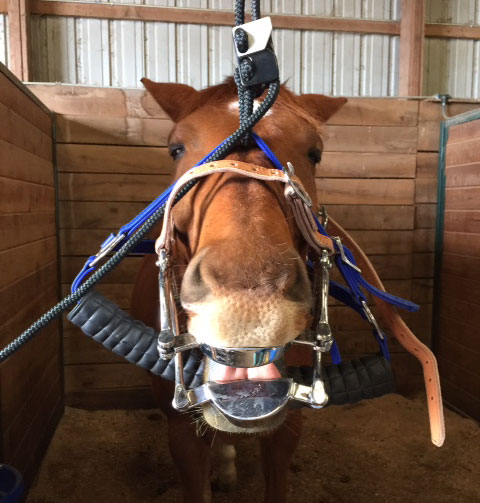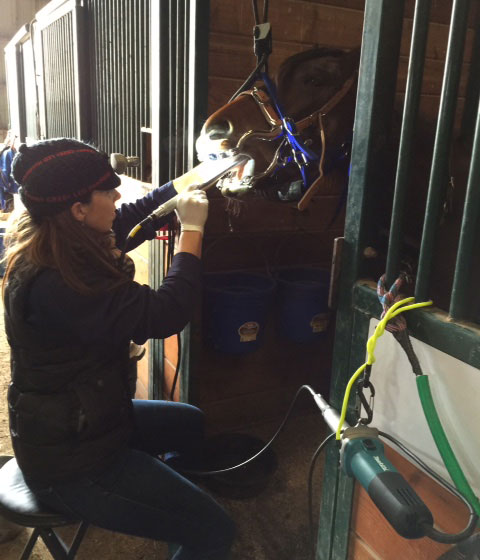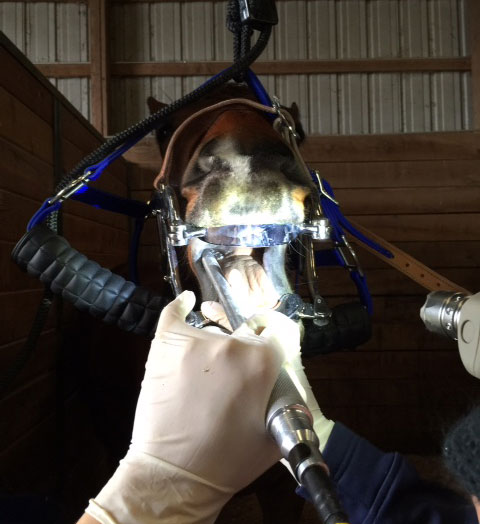Equine Dental Services
Proper dental care is an integral part of a horse’s overall well-being. A horse’s mouth is constantly changing as they age, and each stage can lend itself to certain dental issues. As a horse grows, not only is it’s skull and jaw changing, but their teeth are also constantly growing (referred to as “hypsodont” teeth). The normal anatomy of a horse’s mouth consists of a wider upper dental arcade and a narrower lower arcade. This lends itself to uneven wear of the dental surface and contributes to the need for annual dental care, or more often if major pathology or abnormal dental conformation exist. Some of the more common issues include: sharp dental points of the premolars and molars, erosions of the cheek and tongue, damaged or fractured teeth, and periodontal disease. These problems, if not addressed, can lead to colic, weight loss, performance issues, as well as infections of the mouth and associated sinuses. Normal dental examinations and odontoplasty (commonly referred to as “floating”) by a veterinarian allow any pathology to be identified and addressed in a timely manner.
A proper dental examination and floating consist of a number of components. The initial examination begins with assessment of the musculature of the head and jaw, as well as correct movement of the Temporomandibular Joint and health of the sinuses. This is done at rest and prior to sedation. Once this is performed, the horse is given light IV sedation to help decrease anxiety, improve cooperation, and provide mild analgesic effects. The patient’s mouth is then flushed with a mild antiseptic and a dental speculum is applied. The mouth is then opened through the use of the speculum and a dental halter or crutch is applied to allow for stability and support of the horse’s head. All aspects of the oral cavity are examined and any notable pathology is charted on the horse’s dental record.
Based on the dental examination, any necessary extractions (wolf tooth removal, retained caps, fractured teeth) are performed prior to floating. The odontoplasty is then performed through the use of an electric motorized dental float, and each tooth is addressed in a methodical and timely manner, in order to remove any sharp points, hooks or ramps that are commonly present. After the cheek teeth are addressed, the incisors and canine teeth are floated if pathology is present. Once the float is complete, the horse’s mouth is again flushed with a mild antiseptic to help lavage any existing ulcerations and flush out any dental debris.



